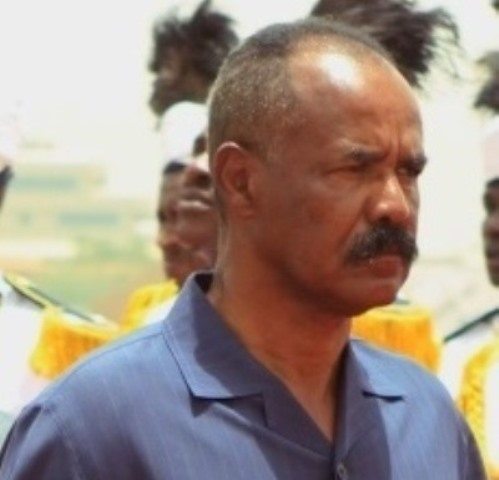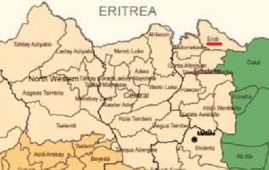As the conflict between Kenya and the Somali militia Al Shabab continues, it seems that the ultimate goal of the Kenyan raid could be draw new borders in the Somali territory with the creation of the Government of Azania, which would correspond to Jubaland region in the south and west of Somalia.
At first, the military offensive, launched in on October 16, was intended "to push Al Shabab away from the border," as claimed by the Kenyan authorities themselves.
Kenya blames Al Shabab for several attacks against European citizens in their territory, including the abduction on 13 October the White Spanish aid worker Thiebaut and Montserrat Serra in the Dadaab refugee camp, which would have been the trigger for Kenya’s military offensive.
But several experts suggest, the main and final objective of the offensive is to establish an autonomous region free of Al Shabab in southern and western Somalia. That would be the current Azania, which exists only in name and corresponds to the area known as Jubaland.
An autonomous region Azania would be a ‘buffer zone’ between Kenya and its troubled neighbor and would also be welcomed by powers like the U.S., which at the present circumstances would have been forced to support the Kenyan military initiative.![Jubaland or Azania [south-west Somalia] Jubaland or Azania [south-west Somalia]](https://hornaffairs.com/wp-content/uploads/2011/11/jubaland-or-azania-south-west-somalia_thumb.jpg)
‘The Kenyan government hopes its campaign will probably be at least a ‘buffer zone’ between its territory and Al Shabab and they can influence, but I’m not sure if Kenya would like Azania to be necessarily independent of Mogadishu,’ said EJ Hogendoorn, Horn of Africa analyst at the International Crisis Group .
According to this interpretation, the kidnapping of European citizens in Kenyan territory have given the perfect excuse to Nairobi to launch a military incursion that was in the making.
Officially, the authorities in Nairobi deny that having that kind of agenda. ‘Our goal is simply to clear the area of the presence of Al Shabab and, as a country, what interests us is that Somalia is stable and support that is united,’ responds to this day Alfred Mutua, the Kenyan government spokesman.
However, several diplomatic cables of US State Department, revealed by Wikileaks, show that Kenya has been pressing for the creation of an autonomous government in the Jubaland region at least since 2009.
Kenya would have reached the end of training and arming southern militias loyal to the government of Somalia Mogadishu to fight against Al Shabab and advance the creation of Azania, according to these cables. Now, given the inability of these militias to fight the Islamists, Kenya have decided to take charge of it.
‘Al Shabab is a serious danger to the entire region and our goal is to eliminate it from all Somalia, and we do not care if the Government decided to establish Somalia’s autonomous region afterwards,’ Mutua insists.
Although according to diplomatic cables then the United States did not agree with this initiative, now Washington did support the creation of an autonomous government in southern Somalia.
Still, U.S. officials have been drawn to this circumstance by seeing the establishment of Azania as a ‘lesser evil’, as they still do not consider the situation on the ground allows the creation of a strong and stable Azania.
‘Kenya has now time trying to find support for her Jubaland project and [so far it has] failed because the West believes that Gandhi (Mohamed Abdi Gandhi, current leader of Azania) has not made sufficient political work in the field,’ said Hogendoorn. ‘But I think America has had to join the operation and is providing intelligence to Kenya.’
Publicly, the U.S. has distanced itself from the operation at all times, but her diplomatic circles do recognize the interest and support from Washington for what is happening in Somalia.
‘America does not recognize an independent Azania, as it does not recognize the independence of Somaliland, Puntland or, but opposed to Al Shabab Somali gain wide support in Azania, then the U.S. will surely support this region as well as Somaliland and Puntland supports,’ says email Professor David Shinn, former U.S. ambassador to Ethiopia and expert on the region. ‘But I wonder if there are sufficient forces to maintain friendly Somali Jubaland Kenya has been expelled after Al Shabab, but I hope that my concerns are wrong.’
Puntland is a region of northern Somalia, which has considerable autonomy and has remained relatively stable compared with the center and south , although it is where Somali pirates have created their bases. Somaliland, further north, has unilaterally declared independence from Mogadishu and has a democratic government and a political and economic system much more stable than in the rest of Somalia.
Shinn, who is also professor of international relations at George Washington University, assumes that his country is behind the Kenyan military operation: ‘Of course the U.S. would support the defeat of Al Shabab probably in this region and is providing intelligence and perhaps giving further support to Kenya with this goal.’
For its part, the central government in Mogadishu, Somalia has always been opposed to giving autonomy to the region of Jubaland.
Would Azania be viable?
In fact, technically, Azania was created last April when Mohamed Abdi Gandhi, former Defense Minister of Somalia and former professor of Anthropology in France, took the ‘presidency’ of Azania, which came to include the provinces of Lower Juba Somali , Middle Juba and Gedo, which correspond to Jubaland area with about 1.3 million people. In theory, the capital of Azania would be precisely the city of Kismayo, the current stronghold of Al-Shabaab.
During his "inauguration" in April, Gandhi declared that he "would love to prune away with Al Shabab." However, until now, the existence of Azania as self-government is more virtual than real, since the entire area is under the control of Al Shabab and Gandhi actually lives in Nairobi.
According to reports, Gandhi has the support of Kenyan intelligence and France and remains the favorite to become president of the supposedly autonomous region – Azania.
Even so, America doubts the political capacity of Gandhi and other leaders in the region might aspire to the post.
‘My fear is that any (candidate) Somali should have enough support in the region of Jubaland, which could complicate any effort in creating a viable and free region of Al Shabab,’ said former Ambassador Shinn.
In fact, according to this information, the Kenyan military establishment would support a different candidate for the office of the future president of Azania. This would be Sheikh Ahmed Madobe, Gandhi’s political rival and leader of a Somali militia loyal to now allied with Mogadishu and Nairobi in this military offensive .
In the case that Kenya manages to clear the whole area from Al Shabab, and once removed the common enemy, it is possible that Somali factions could fight to control the Government of Azania.
"I think Azania / Jubaland would very difficult to stabilize and I am afraid, like many other analysts, that Kenya could be dragged into a long occupation of the land, which could then lead to a backlash of its inhabitants" adds Hogendoorn from the International Crisis Group. ‘More or less as it occurred in Ethiopia during the intervention at the behest of the former Somali government from 2006 to 2009.’
It was the Ethiopian occupation, then with U.S. support, and the consequent expulsion of the Union of Islamic Courts from Mogadishu government between 2006 and 2007 that led to the creation of Al Shabab and led to the current phase of conflict.
************
This article first appeared, in Spanish language, on El País, titled ‘Azania, verdadero objetivo de Kenia en Somalia’, on Nov. 22, 2011. I translated it using Google-translator and contextual reading (for grammatical corrections). El País is not responsible for any mistranslations.
Note that: Though the writer claims above that Al-Shabaab was created after Ethiopia’s Dec. 2006 intervention in Somalia, in reality Al-Shabaab predates the Ethiopian military intervention and it was a radical youth wing of the Union of Islamic Courts (UIC).
Check Somalia archive or Kenya archive or Wikileaks archive for related posts.






In Person, the sustenance architectural plan
was offering a gratuitous online service for the Filipino Viewers of losing weight-CBN thru this site.
A study done by Dr. Anne E. Becker of Harvard Medical School surveyed people in Fiji to and more kilogram calories so you go along to mislay weight.
Elevate legs and berms in a 2-3 min warmup of weak jogging, springing jacks, or bound forget
me drug.